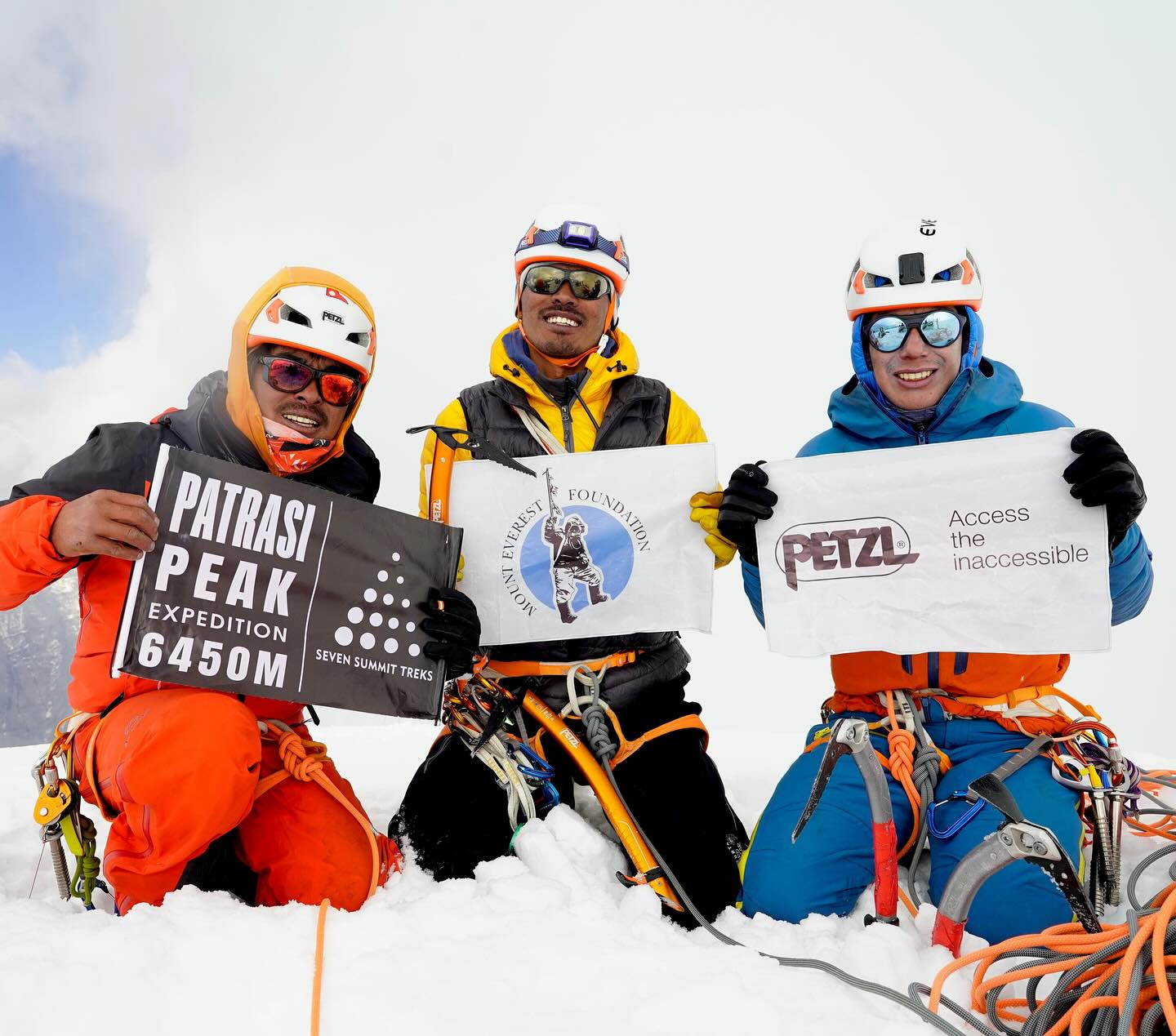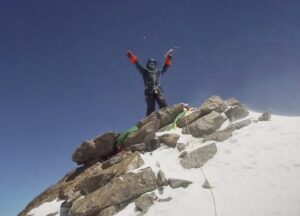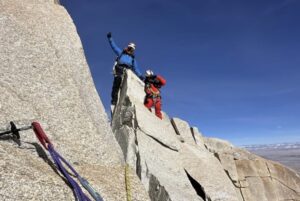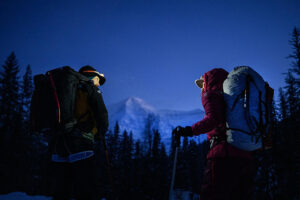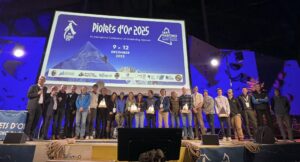Just days after arriving, Vinayak Jalla Malla, Pasang Rinzee Sherpa, and Pasang Kami Sherpa have successfully climbed Patrasi Peak (6,450m) in western Nepal. They did so alpine style and left no trace behind.
The Nepalese guides have made the most of their free time between their seasonal guiding. Malla and Kami were fresh from Everest, and Pasang Rinzee worked on Dhaulagiri. They also received a grant from the UK’s Mount Everest Foundation. The program supports Nepalese teams who want to pursue exploratory goals with a light environmental footprint.
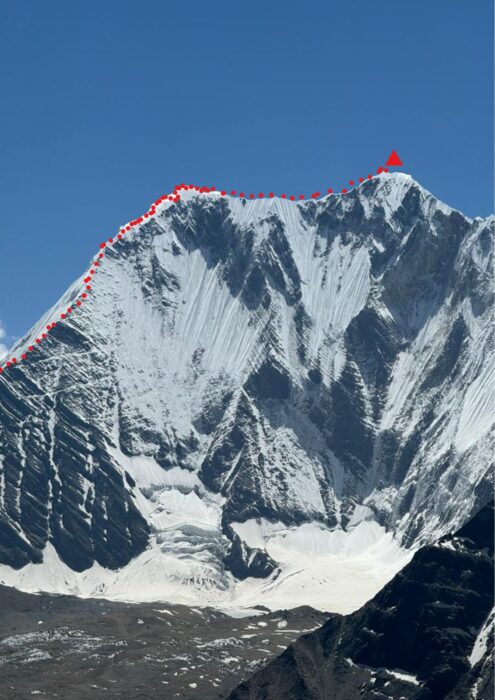
The new route on Patrasi. Photo: Fast and Light team
Carrying only essential gear, they climbed the mountain between June 10 and June 14 in one go.
The climb
The route started up the northwest ridge, following the edge in order to avoid rockfall. After 650 vertical meters, the three climbers stopped for the night.
“There was no good place to pitch the tent safely, so we slept with our harnesses on,” they reported.
The next day, they climbed 11 pitches on mixed terrain (Grade 4). The weather was windy, with several snow squalls.
“The terrain was challenging, with loose rocks and in some places, no placement for protection for around 15 meters,” they said. “We arrived at our second camp around 6 pm. Setting up the tent was difficult, and we had to use ice blocks [to anchor the tent].”
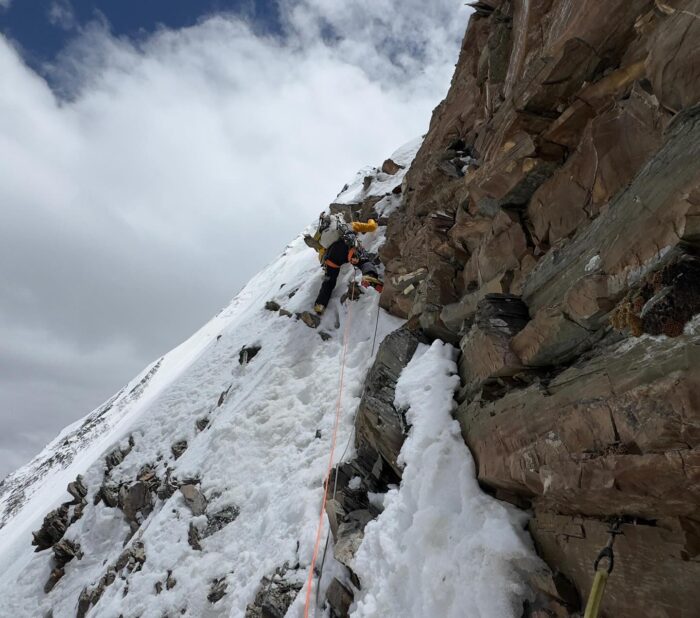
One of the climbers on a technical section. Photo: Pasang Rinzee
Their summit day went as follows:
On June 12, we started at 4 am and reached the summit at 4:35 pm, arriving back at Camp 2 at 9:30 pm. It was a long, tiring day. We followed the ridge with cornices, crossed a blue ice section, and reached a snowfield. Then we descended a bit and did a long summit ridge traverse.
The weather was cloudy. We pushed hard, returned to Camp 2, and slept without food.
They camped one more night on the mountain before descending to Base Camp.
“[It was] different from the fixed rope climbing we are used to,” Malla said. “[But] this kind of technical climbing brings out the real joy in mountaineering.”
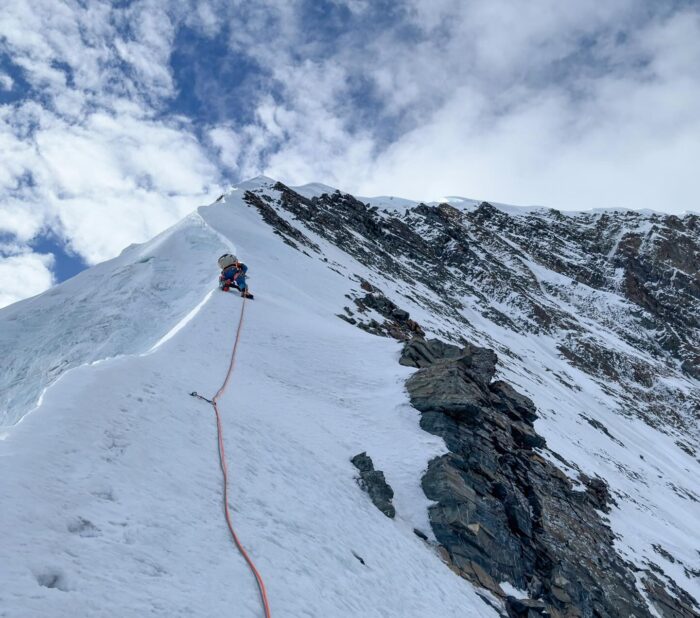
The last sections on Patrasi before the summit. Photo: Light and Fast team
Three other parties of alpinists had scouted the peak previously, but it had been attempted only once before, by Bradley Morrell of the UK in 2014, according to The Himalayan Database.
Isolated corner of Nepal
“This expedition [had] three main objectives,” wrote Vinayak Malla. “To make a first ascent of Patrasi, to promote alpinism and sustainable mountaineering in our home country, and to highlight the beauty of far western Nepal.”
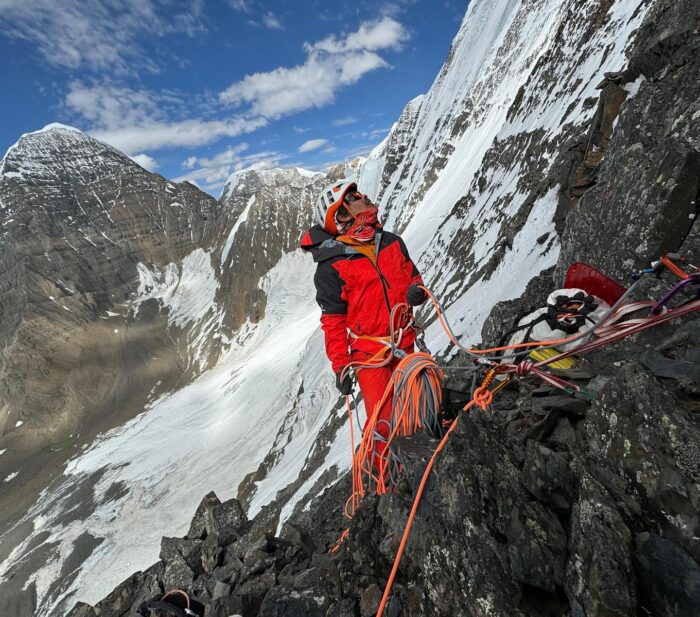
Belaying on a rocky section. Photo: Light and Fast team
The team also described their five-day trek through this isolated region with local guide Amrit Nepali Sarki, three Base Camp crew from Kathmandu, and three porters.
“The trails were easy, with a gentle slope following the Chaudhabise Khola River for the first few days,” they explained. “We listened to the local people and followed their ancient traditions, which included sacrificing two cocks to the local deities before continuing to base camp. This was considered a blessing and ensured a safe passage ahead.”
